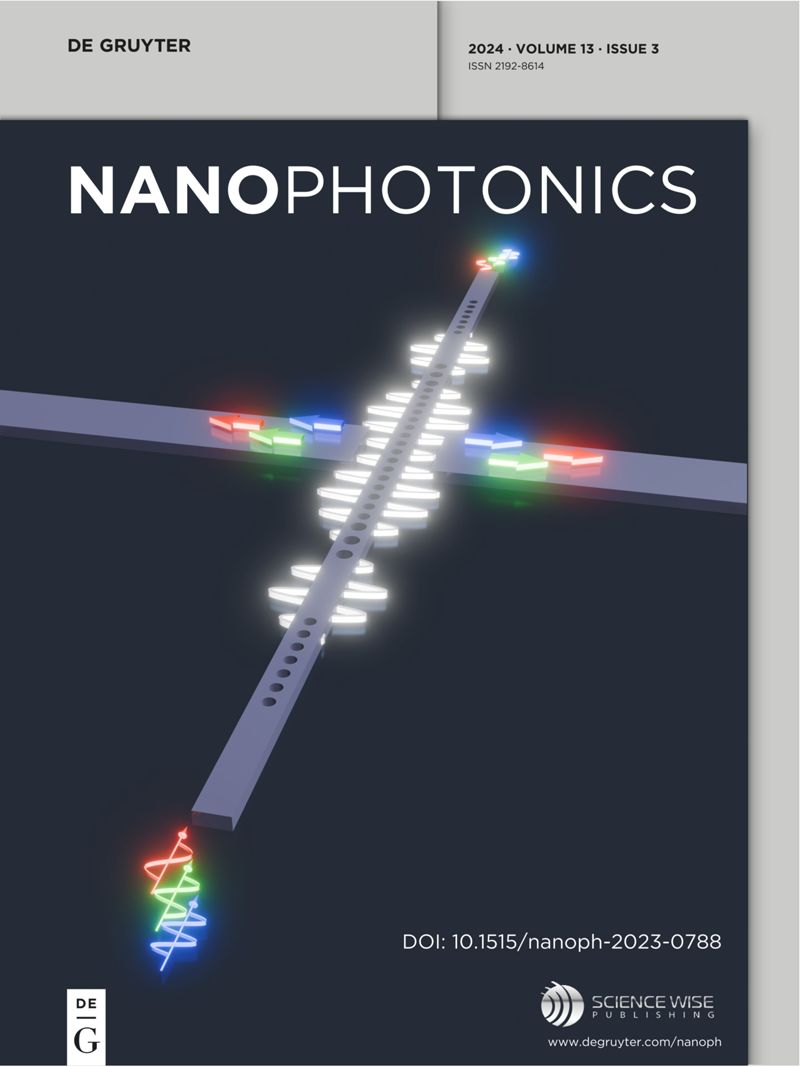亚波长硅薄膜的高谐波产生
IF 6.5
2区 物理与天体物理
Q1 MATERIALS SCIENCE, MULTIDISCIPLINARY
引用次数: 0
摘要
近年来,在纳米尺度上对各种材料非线性特性的研究取得了重大进展。通常,在没有合适的理论模型的情况下,谐波产生的实验结果被报道,这些模型允许与材料的固有特性相比评估转换效率。在此,我们报告了一个悬浮的亚波长硅薄膜在210 nm(我们的检测系统的电流极限)的紫外范围内共振产生的高达7次的偶和奇谐波的实验观察,使用的峰值功率密度为3 TW/cm2。我们还强调了硅的介电函数的时变特性,它在强光照下表现出很大的变化。我们用时域流体力学麦克斯韦方法解释实验数据,该方法广泛适用于大多数光学材料。我们的方法同时考虑了产生均匀光学谐波的表面和磁性非线性,以及超过三阶的线性和非线性材料色散,以解释奇数光学谐波,等离子体形成和锁相机制,使高谐波的产生成为可能,深入到紫外线范围,其中半导体如硅开始在金属状态下工作。本文章由计算机程序翻译,如有差异,请以英文原文为准。
High-harmonic generation from subwavelength silicon films
Recent years have witnessed significant developments in the study of nonlinear properties of various materials at the nanoscale. Often, experimental results on harmonic generation are reported without the benefit of suitable theoretical models that allow assessment of conversion efficiencies compared to the material’s intrinsic properties. Here, we report experimental observations of even and odd harmonics up to the 7 th, generated from a suspended subwavelength silicon film resonant in the UV range at 210 nm, the current limit of our detection system, using peak power densities of order 3 TW/cm2 . We also highlight the time-varying properties of the dielectric function of silicon, which exhibits large changes under intense illumination. We explain the experimental data with a time domain, hydrodynamic-Maxwell approach broadly applicable to most optical materials. Our approach accounts simultaneously for surface and magnetic nonlinearities that generate even optical harmonics , as well as linear and nonlinear material dispersions beyond the third order to account for odd optical harmonics , plasma formation, and a phase locking mechanism that makes the generation of high harmonics possible deep into the UV range, where semiconductors like silicon start operating in a metallic regime.
求助全文
通过发布文献求助,成功后即可免费获取论文全文。
去求助
来源期刊

Nanophotonics
NANOSCIENCE & NANOTECHNOLOGY-MATERIALS SCIENCE, MULTIDISCIPLINARY
CiteScore
13.50
自引率
6.70%
发文量
358
审稿时长
7 weeks
期刊介绍:
Nanophotonics, published in collaboration with Sciencewise, is a prestigious journal that showcases recent international research results, notable advancements in the field, and innovative applications. It is regarded as one of the leading publications in the realm of nanophotonics and encompasses a range of article types including research articles, selectively invited reviews, letters, and perspectives.
The journal specifically delves into the study of photon interaction with nano-structures, such as carbon nano-tubes, nano metal particles, nano crystals, semiconductor nano dots, photonic crystals, tissue, and DNA. It offers comprehensive coverage of the most up-to-date discoveries, making it an essential resource for physicists, engineers, and material scientists.
 求助内容:
求助内容: 应助结果提醒方式:
应助结果提醒方式:


